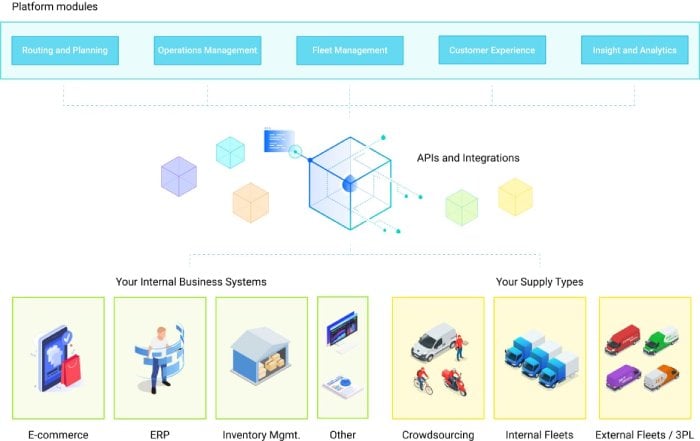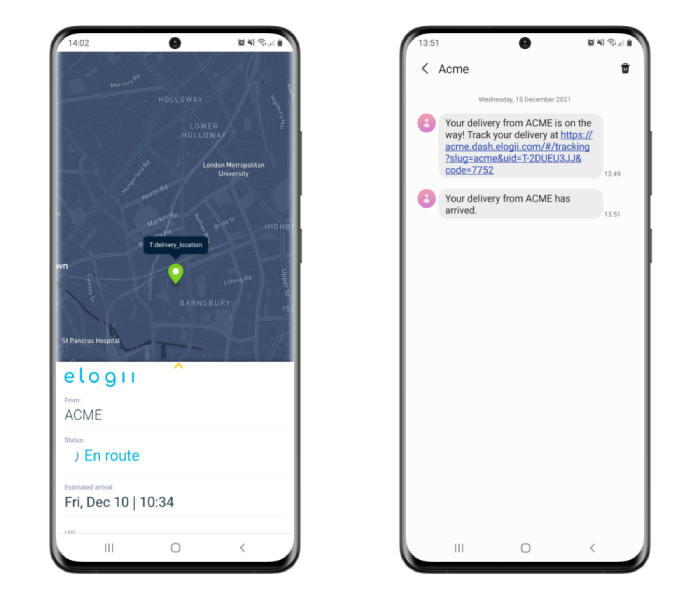Saving Time with Delivery Management Software
Explore how delivery management software saves you time by automating delivery planning, and how much time you ACTUALLY save by using it.
Home > Blog > On Time Delivery: How to Track, Measure and Improve
Customer Experience ManagementLearn how to track and measure on time delivery rates. Use this metric to prevent delays and late deliveries and ensure a great delivery experience
This is the ultimate guide to on time delivery.
So if you want to:
Then you’ll find everything you need to do it in this new guide.
Let’s get started.
On time delivery (OTD) is a performance metric that measures the efficiency of your delivery and supply chain. This KPI assesses your ability to fulfill customer orders by the promised date. You can use it both as a measure of carrier and fleet performance and customer satisfaction.
Determining your on time delivery rate is easy.
To measure on time shipping:
Divide the total number of deliveries by the number of late deliveries during a set period.
Late deliveries are those that occur after the final deadline.
For example, if the delivery due date is set for 1 March at 4 PM and it arrives after that, it’s late. Even if it arrives at 4:05 PM on 1 March.
The on time delivery formula looks like this:

So, for example, if you have 1000 total deliveries and 25 late deliveries in a month, your online-delivery rate is 97.5%.
There is a long-list of key metrics in delivery logistics that you can measure.
The same is true for on time delivery rates:
YES, absolutely.
Why?
Delivery volumes are expanding. That’s making it harder to get deliveries out to customers.
And this means missed and late deliveries.
Your ability to track the on time delivery rate helps you to deliver on time at scale, as order volumes grow.
But it isn’t just an issue reserved for your logistics operations:
In fact, 13% of consumers will NEVER repeat business with a brand if their order doesn’t arrive on time. (Oracle)
And 82% of companies agree that it’s cheaper to retain customers than acquiring new ones.
Even with a 5% drop in retention you stand to lose a profit boost of up to 95%
On the other hand, just one negative review can do serious damage to your brand reputation.
That’s because 89% of customers read reviews before they buy something online.
If you intend to sell them your products, you’ll have to deliver it to their doorstep.
And they’ll expect you to deliver it on time.
So…
It’s REALLY hard to uncover the source of a late or missed delivery separately.
That’s why you measure on time delivery metrics.
So you can reveal recurring inefficiencies and bottlenecks that cause performance to slip.
And address the problem directly.
That said, there are some common causes of poor on-time delivery that include:
The first step of measuring on time delivery is to track your delivery process.
This helps you to know where and why inefficiencies and bottlenecks occur.
When tracking general on time delivery metrics, this is simple enough:
All you have to do is flag late deliveries and failed delivery attempts, and the reasons for them.
However, it gets more complicated when you want to track every stage of the delivery process.
This is impossible to collect, process, and analyze manually.
For this reason, you need to use software.
Specifically: delivery management software.
Tools like eLogii enable you to integrate the system with each stage of your delivery.
From order management, through inventory, to fulfillment, and from first to last mile.
This means you can collect on time data from various entry points.
But more importantly, you can process and analyze the data on one dashboard:
![]()
That’s because the software is modulated:

With a specific module dedicated to analytics.
Here, you can track timeliness per order:
![]()
Per depot:
![]()
Or per driver:
![]()
And in that way uncover the root cause of your problems and delays.
At the same time, the software operates on the cloud.
That means you can track historical data over time.
And compare different on time delivery rates as you implement changes to improve them.
So…
In this part of the guide, we’re going to show you exactly how you can get super high on time delivery KPIs.
In fact:
These are the same exact advanced strategies and techniques that our customers use to generate 95%+ on time delivery rates.
And we’ll explain it to you step by step.
Let’s dive in!
First things first:
Set a goal for your on time delivery rate.
This will help you to benchmark future performance against it.
And implement tactics to try and get where you want to go.
A good on time delivery rate to aim for is 95% or above.
Companies that manage to achieve this rating typically outperform competitors.
When it comes to different stages of fulfillment, set goals based on current performance.
Use score sheets and create incentives for teams to meet those goals.
Employee incentives can raise performance by as much as 40%.
The people in the field delivering goods to customers know what works best. And what doesn’t.
Take the time to talk to your teams to get a better understanding of what slows down their work.
It can help you get a sense where bottlenecks happen. And what changes or tools could help increase speed and efficiency.
Use inventory management software.
This tool helps you to better organize and monitor inventory levels at your storage facilities.
You can use it to prevent:
Together with enterprise-grade delivery software, you can also use it to optimize your supply chain.
For example, you can use it to adjust depot locations, manage suppliers, change supplying frequencies, or evaluate supplier performance. (And if need be, switch to a different supplier)
Stop one-at-a-time order picking at your storage facility.
Working on a single order in a large warehouse or depot isn’t efficient.
Instead, consider multi-order or batch picking, zone picking or cluster picking.
These methods reduce the time it takes to get orders out of the door and onto the delivery van.
If you want to know more about the best inventory and warehouse practices, please read our definitive guide on picking and packing [+ how to improve them RIGHT NOW].
The more packaging you have, the longer it takes to pack items for delivery.
Cutting down the amount of packaging or investing in custom packaging can reduce packing times.
It also helps you to reduce other inefficiencies such as costs.
In fact, most e-commerce parcels don’t take up more than 60% of total package space. So in most packages there’s 40% of space that’s unused.
Automating operations with delivery management software saves you time.
In fact, you can spend as little as 3 minutes managing your deliveries each day.
Not only that, but the analytics software helps you to track performance over time.
You can use this to keep track of on time delivery rates, but also raise efficiency.
For example, route optimization can cut fuel consumption and transportation costs by as much as 50%
While increasing delivery speed to reduce time spent at each stage of the fulfillment process.
Building an agile delivery fleet requires you to focus on four key areas of your business:
1. People
2. Process
3. Structures
4. Technology
You can use delivery software to initiate an agile transformation. And track efficiency of each segment of your business.
This can help make sure everything is on time, as well as optimize your fulfillment.
In doing so, you can use this to scale up or down the size of your fleet. (Depending on delivery demand or your need to expand operations)
While at the same time, using different internal and external fleet models, such as crowdsourced delivery.
No matter how hard you try things can go wrong.
Even the best organizations encounter delivery exceptions that result in delays.
To get ahead of the curb, you’ll need to manage expectations.
Keeping customers in the loop about the delivery status with tracking links is the first step.
If a delay is unavoidable, let them know as soon as possible.
To do this, you can use custom notifications feature of delivery software:

Being transparent about late deliveries creates less friction and makes it less frustrating.
More often than not, people will be reasonable and willing to wait a little longer on their order.
And that can help you to maintain trust and relationships with customers.
Now it’s your turn to shine.
Let us know what is your current on time delivery rate?
How much would you like to increase it?
And what’s preventing you from doing it?
And if you need more help getting started, we’ve got you covered.
Explore how delivery management software saves you time by automating delivery planning, and how much time you ACTUALLY save by using it.
Want to achieve last-mile e-commerce delivery success? Here's how to their relationship, impact, challenges, and the solutions that get you there.
Today, we’ll be discussing delivery logistics. Specifically, how vehicle routing and scheduling work as part of supply and delivery chain logistics.
Be the first to know when new articles are released. eLogii has a market-leading blog and resources centre designed specifically to help business across countless distribution and field-services sub sectors worldwide to succeed with actionable content and tips.
